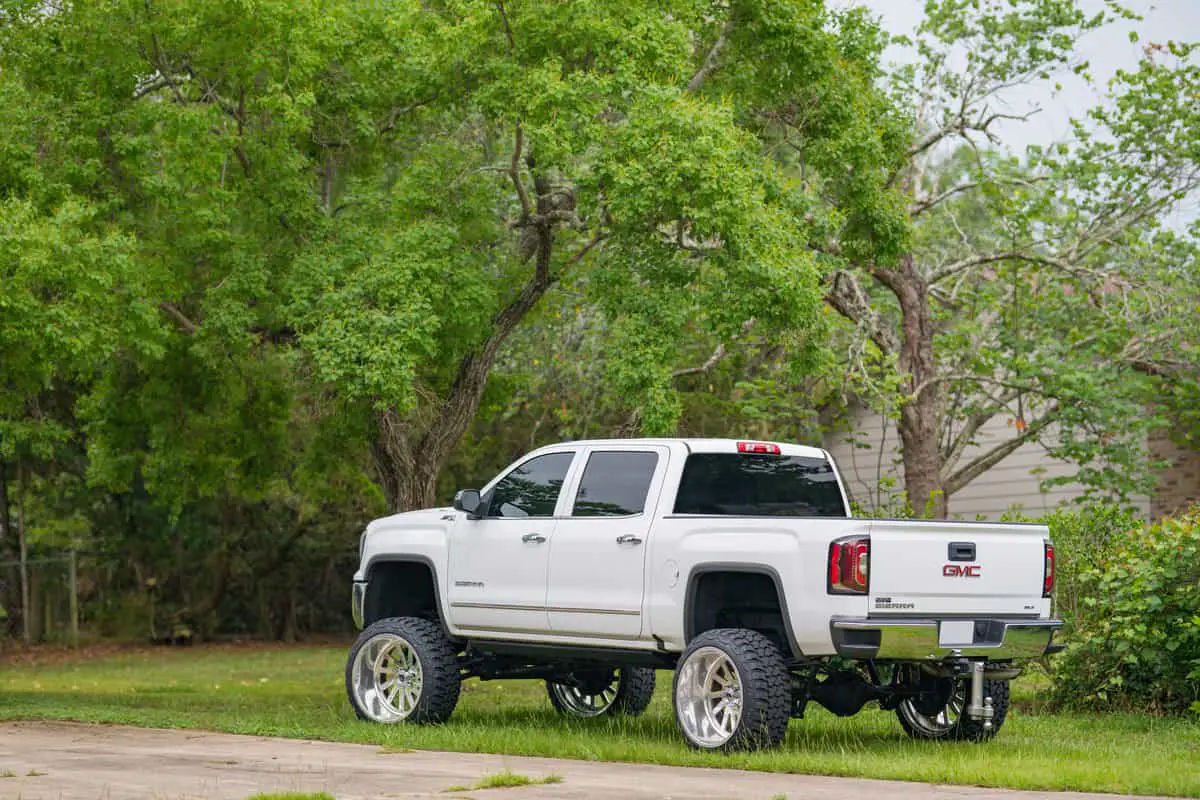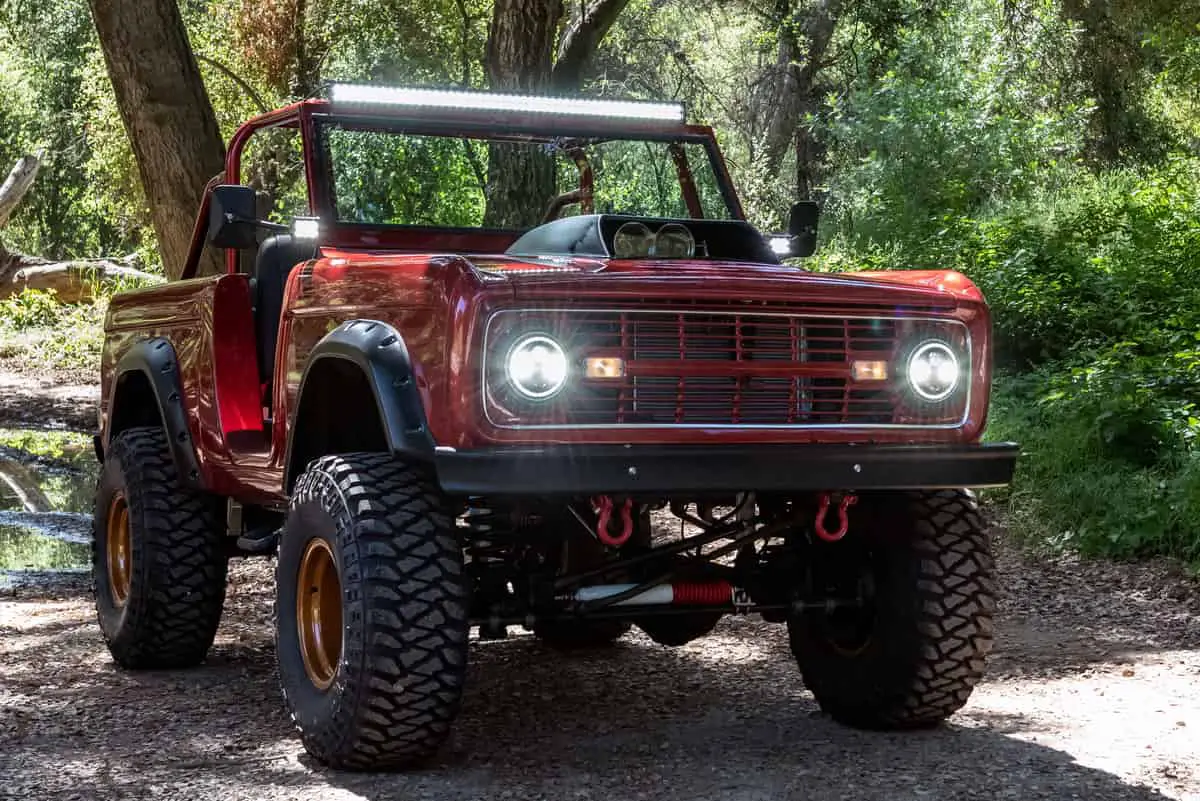Truck lift kits come in two types — body lifts and suspension lifts. Body lift kits raise the truck’s body a few inches, whereas suspension lifts raise the frame. A six-inch lift kit requires the latter, and while 6 inches (15.24 cm) is just a moderate lift height, getting this high requires you to alter the suspension and replace stock components with aftermarket parts.
A 6-inch lift on a truck offers a slightly better view, better off-roading experience, further customization potential, and a custom look without going over the top. However, lifts this high tend to negatively affect gas mileage, handling, and ride quality and may void your warranty.
For some drivers, lifting a truck is all about looks. But if you’re on the fence about a 6-inch lift, keep reading to learn about the biggest pros and cons.

The Pros of a 6-Inch Lift Kit on a Truck
Lift kits are a common way for drivers to customize their trucks, and they offer a fresh appearance and make for a tougher-looking vehicle. But, outside of that, here are some other advantages.
Lifted Trucks Are Better for Off-Roading
When you install a lift kit on a truck, you effectively raise some of its lowest points. Lift kits create more space underneath the vehicle, which gives you more clearance. More clearance is good for off-roading, where you’ll encounter rocks, tree stumps, and generally uneven terrain.
With more space underneath the vehicle, you don’t need to worry as much about colliding with obstacles.
That said, the height of the truck’s axles will be the limiting factor here. Luckily, lifted trucks allow — and often require — you to get bigger wheels and tires. Doing so will raise the height of the axles.
6-Inch Lifts Offer a Custom Look Without Being Obnoxious
Lift kits go far beyond 6 inches, and some will make your truck look more like a monster truck. From an outside perspective, though, this might be a little over the top. Six-inch lifts are noticeable and make it obvious you’ve put effort into customizing your truck, but they won’t make it look like you’re about to debut at Monster Jam.
Also, taller trucks are more difficult to fit into parking garages, home garages, and other tight spaces, but 6-inch (15.24-cm) lifts shouldn’t be too problematic.
Lifted Vehicles Offer a Better View
If you like the feeling of sitting up high, you’ll probably appreciate a truck lifted to 6 inches (15.24 cm). The extra height gives you a slightly better view, and you’ll see more of the road while you’re driving. This might even be an advantage when off-roading as well, as you might be able to spot obstacles easier before you get to them.
Lifting Your Truck Opens the Door for Further Customizations
Truck lifts are common enhancements among truck enthusiasts, and in some ways, installing a lift kit opens the door for other customizations. For example, lift kits create more space between the ground and the top of your wheel well, meaning you’ll be able to install larger tires.
In fact, you will need bigger tires, given that lifted trucks tend to be less stable, and these tires help you maintain stability.
You can also start thinking about accessories like step bars to help you get in and out of the vehicle. Lifting your truck also gives you easier access to the underbody, where you can make repairs or install more aftermarket parts like a custom exhaust system.
The Cons of a 6-Inch Lift Kit on a Truck
Let’s be honest: There aren’t a lot of functional advantages of a 6-inch (15.24-cm) lift on your truck. In fact, the added height works against you in many ways. Here are some of the most notable disadvantages.
Height Changes the Center of Gravity
Increasing the height of your vehicle moves the center of gravity. In other words, you’re raising the spot at which most of the weight is concentrated. In some scenarios, the truck may flip over easier with the weight being higher up. Sharp turns, for example, might be more difficult and potentially dangerous when taken at high to moderate speeds. Sudden stops and winding roads are also more difficult for lifted vehicles.
Height Negatively Affects Gas Mileage
Lifted vehicles tend to have worse gas mileage, and the higher you go, the worse it gets. This is bad news for trucks, which already have lower average gas mileage than most cars. If you have a second, more gas-efficient vehicle you use as a daily driver, this may not be a concern to you.
A Lift Kit Might Void Your Manufacturer’s Warranty
In some cases, installing aftermarket parts like a suspension lift on the vehicle may void its original warranty. If the warranty has expired already, this doesn’t really matter. However, if your truck is newer, you’ll want to check the fine print of the manufacturer’s warranty if you wish to keep it.
Lifting Changes Vehicle Dynamics and Geometry
Lifting a truck changes more than just its height. With a suspension lift kit, you’ll wind up replacing things like the shocks and control arms (among other parts), and by the end of it, the way your vehicle rides and drives can change dramatically. Some of the things that’ll be affected include:
- Stability and handling
- Suspension
- Steering
- Ride quality
- Engine power
- Towing capacity
In most cases, these things are negatively affected and require recalibrations or additional parts to function the way the manufacturer intended. Lift kits often accelerate wear and tear on certain systems, but the quality of parts and installation dramatically affect the outcome.

Final Thoughts
If the current height of your truck isn’t enough, 6-inch lifts are a reasonable place to start. You’ll have a higher ride, and you’ll get a feel for the way the lift changes your vehicle. Later, you can decide whether or not you want to go higher.
Lifting your truck 6 inches may force you to get larger tires, but you’ll have better clearance for off-roading and easier access to the underbody. Just keep in mind that the quality of the parts and installation of the suspension lift can dramatically impact the driving experience.
Sources
- Durabak: Pros and Cons of Having a Lift Kit
- Autotrader: How Lift Kits Affect Driving Performance: Speed, Towing, and Gas
- The Benton Law Firm: The Dangers of Lifted Vehicles
- Carolina Custom Wheels: How Will Lifting My Truck Affect the Ride
- Napa Auto Pro: Raising Your Truck’s Suspension – Good Idea or Bad Idea
